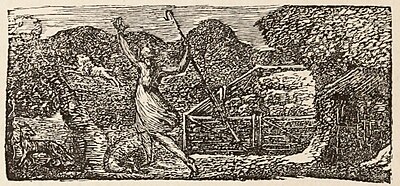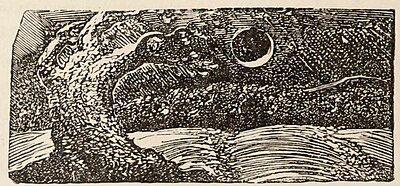Before Bewick’s death, in 1828, another English genius, William Blake (1758–1827), greater as an artist than as an engraver, produced a series of woodcuts (Fig. 68) which is remarkable for vigor and originality.

Fig. 68.—The Sheep-fold. By Blake. From Virgil’s Pastorals.
They were published in a reprint of Ambrose Philips’s Imitation of Virgil’s First Eclogue, in Dr. Thornton’s curious edition of Virgil’s Pastorals which appeared in 1820. One of them (Fig. 69) represents a landscape swept by violent wind. The idea of autumnal tempest has seldom been so strikingly and forcibly embodied as in the old gnarled oak straining with laboring limbs, the hedgerows blown like indistinguishable glimmering dust, the keen light of the crescent moon shining through the driving storm upon the rows of laid corn and over the verge of the distant hill. Contemporary engrav-

Fig. 69.—The Mark of Storm. By Blake. From Virgil’s Pastorals.
